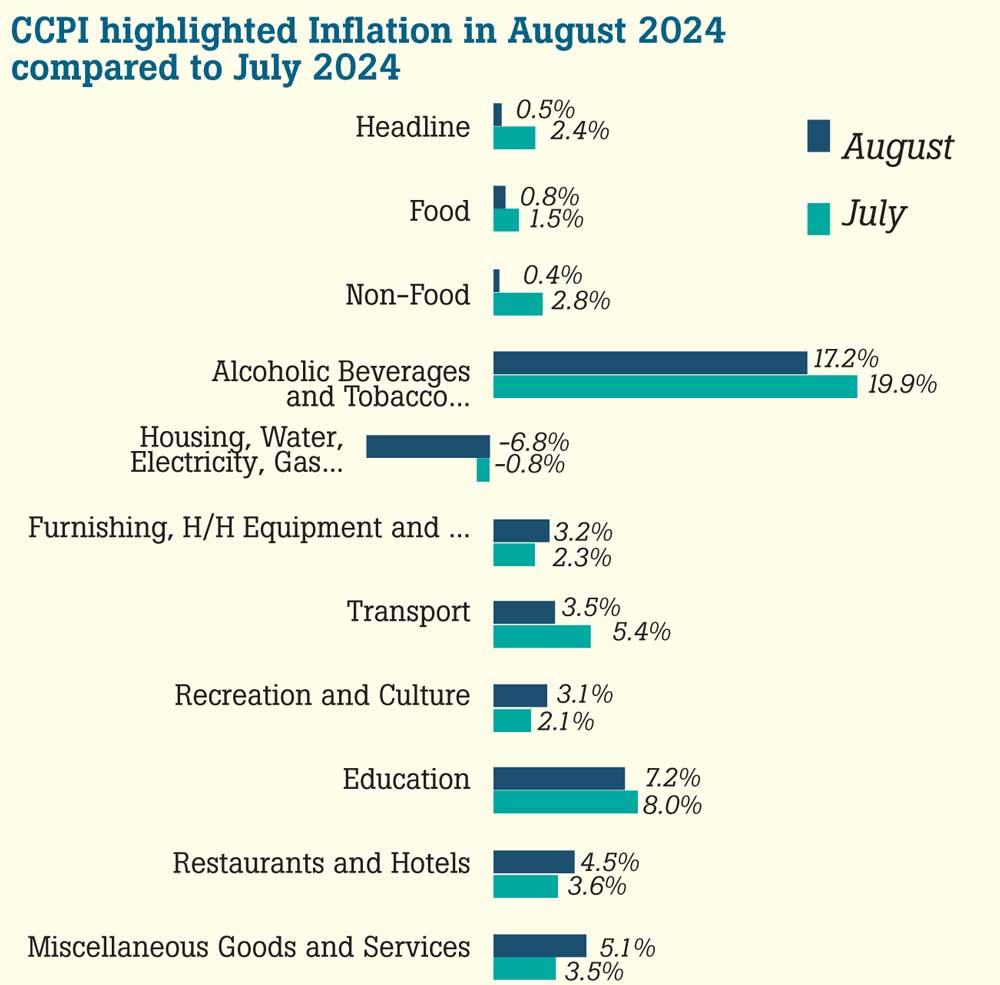31 Aug 2024 - {{hitsCtrl.values.hits}}

Inflation in the Colombo district slowed sharply in August, as both food and non-food prices cooled after the government started cutting the tariffs of the utilities and fuel, ameliorating the price pressures through the supply chains.
The prices measured by the Colombo Consumer Price Index, the mostly watched gauge of consumer prices, decelerated to 0.5 percent in the 12 months to August 2024, from 2.4 percent through July.
The prices measured on a monthly basis meanwhile continued their declines, falling by 1.8 percent in August, accelerating from a 0.5 percent decline between June and July. After coming off from a runaway inflation, which peaked near 70 percent in 2022, Sri Lanka has managed to maintain its prices at single-digit levels for little more than a year now.
The Central Bank recently said that it is confident of maintaining its inflation below 5.0 percent through the end of first quarter next year before seeing a slight pick-up thereafter, which would also not threaten its medium-term inflation target.
As prices remained low and the inflation expectations also remain well anchored in the absence of any extraordinary events that will threaten the price stability, the Central Bank also signalled that it remains titled towards monetary easing.
However, it is unlikely that it will cut rates in September, ahead of the Presidential elections but could do so thereafter in the remainder of the year.
The food inflation meanwhile slowed significantly to 0.8 percent in August, measuredly annually from 1.5 percent through July.
The monthly prices meanwhile fell by 2.0 percent, as the decline in prices in commodities more than offset the rise in the prices in the same period.
The non-food prices further softened to 0.4 percent in August, from 2.8 percent through July. Meanwhile, the prices measured on a monthly basis fell sharply by 1.8 percent in August, extending its six-month-long decline in prices.
This was possible from the easing prices in utilities, power and energy.
For instance, the cut in electricity and water tariffs and downward prices adjustments to fuel and gas contributed heavily in bringing down the non-food prices. The decline in these prices has the potential to impact the prices in goods as well, as they ease the cost of production and transport, helping to bring down the sticker prices of many goods.
This was seen in the recent producer prices too which have been easing through the supply chains.
Meanwhile, the so-called core prices, measured barring the often-volatile food, energy and transport, recorded 3.6 percent in the 12 months to August, slowing from 4.4 percent through July, signalling that the underlying price pressures are further subsiding.
22 Nov 2024 2 hours ago
22 Nov 2024 2 hours ago
22 Nov 2024 2 hours ago
22 Nov 2024 3 hours ago
22 Nov 2024 4 hours ago